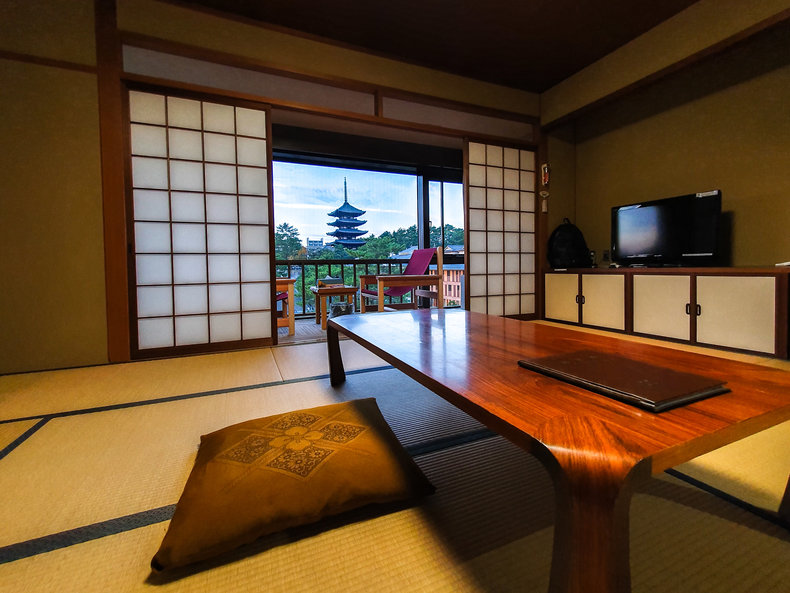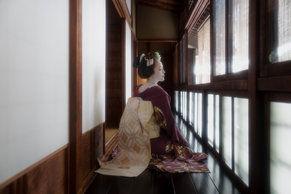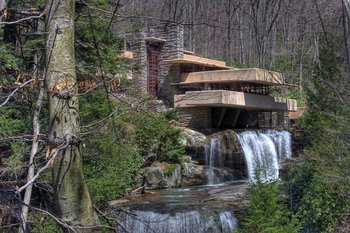|
| |
Tatami are traditional Japanese floors constructed with standard sized mats that have a rice straw core and a soft rush covering.LifestyleTatami represent the traditional Japanese lifestyle of living and sleeping close to the floor. Tatami are associated with Japanese futon beds, a type of mat bedding that is laid out on the floor in evenings and put away each morning. Furniture designed for tatami are lightweight so as not to damage the delicate mats. Tables for tatami are designed for sitting on the floor or on thin mats known as zabuton. Tatami are considered to have much charm as a lifestyle and are popular at vacation spots in Japan. Traditional Japanese inns known as ryokan typically have tatami rooms. In some cases, modern hotels also offer tatami.
There are a wide range of Japanese manners and etiquette related to tatami with the most important being the rule that shoes can never be worn on a tatami floor. Modern Japanese homes and apartments often have one tatami room that may be used as a living room or bedroom. Tatami are expensive, difficult to maintain and typically need to be replaced every 10 to 20 years.
Tatami are considered a cultural item in Japan and tend to trigger a sense of nostalgia. New tatami mats have a slightly woody scent that is considered pleasant.|
Type | | Definition | Traditional Japanese mat floors. | Tatami Sizes | Tatami are standard sizes that differ by region of Japan as follows. Kyoto 0.955 x 1.91 metersNagoya 0.91 x 1.82 metersTokyo 0.88 x 1.76 metersTatami are generally 5.5 cm or 6.0 cm thick. | Room Sizes | Rooms in Japan are commonly constructed to be a standard size based on the size of tatami such as 16, 12, 9, 6 or 4 1/2 tatami rooms. In many cases, rooms that have western floors are also designed to these sizes. | Related Concepts | |
Next: Fusuma
Architecture
This is the complete list of articles we have written about architecture.
If you enjoyed this page, please consider bookmarking Simplicable.
A list of Japanese architecture styles, techniques and elements.
The difference between fusuma and shoji.
A complete overview of the Japanese aesthetic of wabi-sabi.
An overview of architecture with examples.
A list of common architectural technologies.
An overview of night architecture.
The difference between active and passive design.
A definition of universal design with examples.
The common types of passive lighting.
The common types of architectural acoustics.
An overview of parti pris in architecture with an example.
A definition of genius loci with examples.
An overview of massing in architecture.
A definition of compressive strength.
TrendingThe most popular articles on Simplicable in the past day.
Recent posts or updates on Simplicable.
Site Map
© 2010-2023 Simplicable. All Rights Reserved. Reproduction of materials found on this site, in any form, without explicit permission is prohibited.
View credits & copyrights or citation information for this page.
|


































